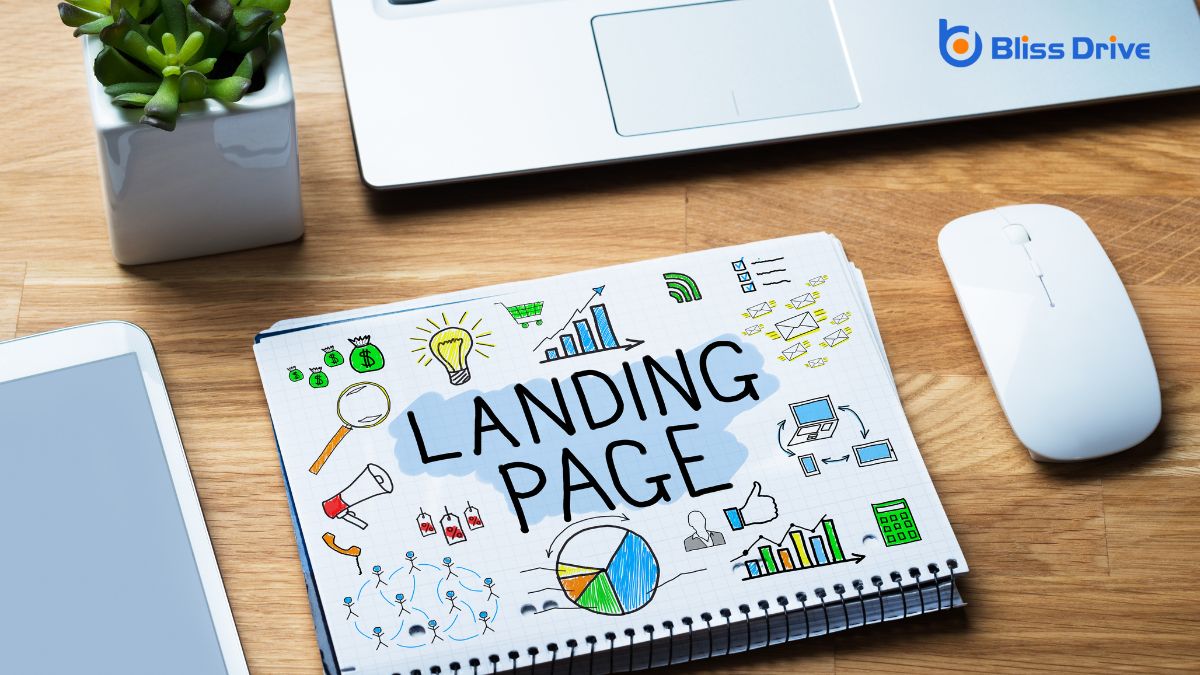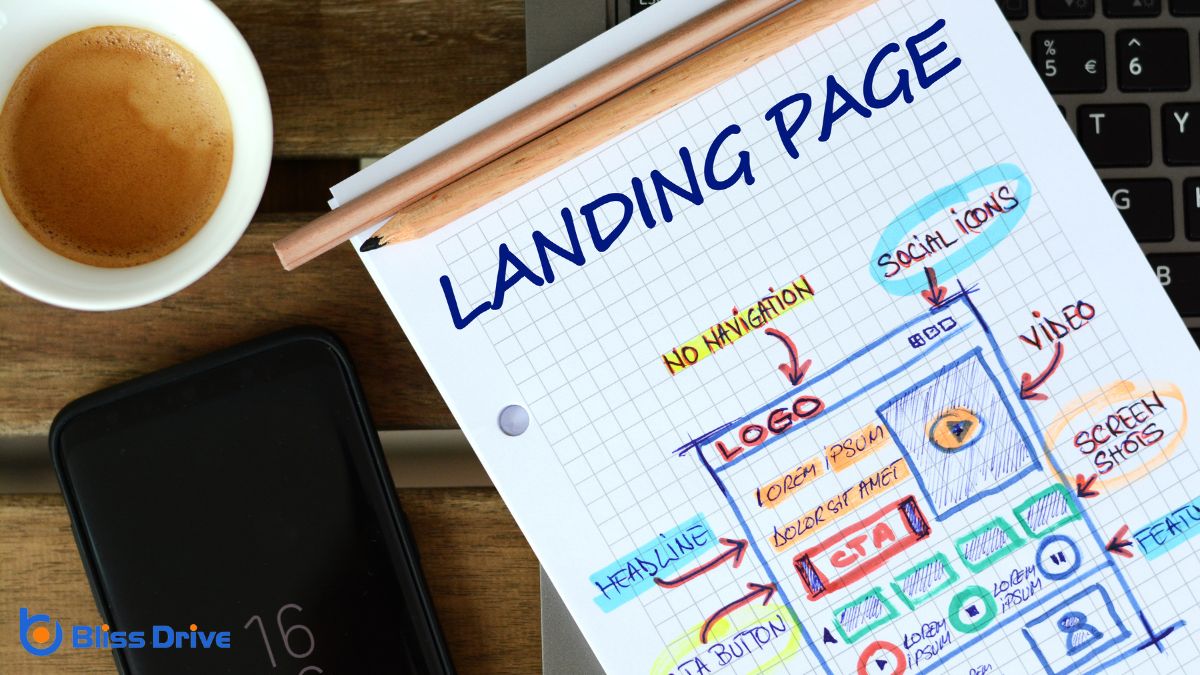Learn More About Us

In our digital marketing strategy, landing pages are essential components that guide potential customers to specific actions, like signing up or making a purchase. They strip away distractions, guaranteeing our message is clear and compelling. By aligning them with marketing campaigns and enhancing user experience, we boost engagementThe interactions that users have with a brand’s content on social media. and conversions. But how do we guarantee these pages truly perform? Let's explore the strategies that make landing pages effective catalysts for success.

Landing pages are essential in digital marketing because they serve as the first point of interaction between us and our potential customers.
They act as a focused entryway designed to capture attention and encourage action. When visitors arrive, we're not just introducing our brand; we're inviting them to engage further.
Our goal is to communicate a clear value propositionA statement that clearly explains the benefits of a product or service and why it is better than the... that resonates with their needs and interests.
An effective landing page is meticulously crafted to guide visitors towards a specific action. We focus on simplicity and clarity, guaranteeing the message aligns with what visitors expect.
Headlines grab attention immediately, while concise, persuasive copy emphasizes the benefits of taking action. Visual elements, such as images or videos, enhance engagement and reinforce the message.
We also prioritize a compelling call-to-action (CTA). The CTA should be prominent, concise, and action-oriented, encouraging visitors to click through. Trust signalsElements that build trust with visitors, such as security badges, testimonials, and privacy policies..., like testimonials or security badges, build credibility and reassure potential customers.
Finally, we guarantee the landing page is mobile-friendly and loads quickly, as these factors considerably impact user experience.
Let's explore how we can effectively align our landing pages with our targeted campaigns by focusing on campaign-specific designs and tailored messaging strategies.
By creating landing pages that reflect the unique elements of each campaignA set of ad groups sharing a budget, targeting options, and other settings., we guarantee that our visitors have a seamless and relevant experience.
It's essential that we craft messages that resonate with specific audiences to boost engagement and conversion rates.
When we align our landing pages with targeted campaigns, we create a seamless experience that resonates with our audience's specific needs and motivations.
Campaign-specific landing pages are essential because they act as the bridge between our marketing efforts and the desired action we want visitors to take. By designing these pages with a clear focus on a particular campaign, we can effectively engage our audience and guide them toward conversion.
We should tailor each landing page to mirror the campaign's theme, ensuring consistency in messaging and design. This consistent alignment helps build trust and keeps the user journey smooth.
With campaign-specific landing pages, we're not just talking at our audience; we're having a meaningful conversation that addresses their interests and desires, increasing the likelihood of successful outcomes.
Building on the importance of campaign-specific landing pages, we focus on tailored messaging strategies that align these pages with our targeted campaigns. By crafting messages that resonate with our audience's needs and desires, we enhance the effectiveness of our landing pages.
It's essential to keep our audience's preferences in mind, ensuring our content speaks directly to their interests. This alignment between the campaign and landing page helps create a seamless user journey, increasing the likelihood of conversions.
We must analyze data from previous campaigns to understand what resonates best with our audience. This insight allows us to personalize messages, making them more relevant and compelling.
While a well-designed landing page can considerably enhance user experience, its true power lies in its ability to guide visitors seamlessly towards a desired action. We achieve this by focusing on three key elements: clarity, design, and relevance.
First, clarity guarantees our message is straightforward and easy to understand. We avoid overwhelming visitors with too much information, instead presenting concise content that aligns with their needs.
Next, design plays an essential role. A clean, visually appealing layout with intuitive navigation keeps users engaged. We use consistent brandingThe process of creating a unique name, design, and image for a product or service in the consumer's ... and strategic visual elements to create a sense of trust and professionalism.
Lastly, relevance is paramount. We tailor the content to each visitor’s interests, guaranteeing the landing page speaks directly to their expectations.
Together, these elements craft a user-friendly experience.
When we focus on targeted audience engagement, our landing pages become powerful tools that speak directly to the needs and interests of our visitors.
By crafting a clear call-to-action, we guide users smoothly toward taking the desired step, whether it's signing up, purchasing, or learning more.
Together, these elements greatly boost our conversion rates, turning visitors into loyal customers.
Landing pages are a powerful tool in digital marketing, greatly influencing how we engage with our targeted audience and ultimately boost conversion rates. By tailoring content specifically for the audience we aim to reach, we create a more personalized experience that resonates with them.
These pages allow us to address the unique needs and preferences of our audience, making our message more relevant and compelling. When our audience lands on a page designed just for them, they’re more likely to feel connected to our brand.
This connection fosters trust and encourages them to take the desired action, whether it's signing up for a newsletterA regularly distributed email containing news, updates, and content relevant to subscribers. or making a purchase. By focusing on targeted audience engagement, we can considerably enhance our marketing strategy's effectiveness and achieve better conversion outcomes.
A strong call-to-action (CTA) is the heartbeat of any effective landing page and directly impacts conversion rates.
When we craft our landing pages, a clear CTA guides our visitors toward the desired action, whether it's signing up for a newsletter, downloading an eBook, or making a purchase. The clarity of our CTA can make or break the user's decision to engage further.
We should guarantee our CTA stands out visually and is easy to understand. By using compelling language and positioning it strategically on the page, we can drive higher engagement.
Let's also test different variations to see what resonates most with our audience. Remember, a well-designed CTA isn't just a button; it's a pathway to achieving our marketing goals effectively.
While many elements contribute to successful digital marketing, landing pages play an essential role in lead generationThe process of attracting and converting prospects into potential customers.. They serve as the first point of contact for potential customers, capturing their interest and guiding them toward taking action. By focusing on a single goal, landing pages minimize distractions and encourage visitors to provide their contact information. This approach helps us build a solid database of leads to nurture into loyal customers.
To maximize effectiveness, our landing pages should be well-designed and user-friendly, with persuasive content that speaks directly to our audience's needs. By aligning messaging with visitor intent, we increase our chances of converting them into leads.
Let's guarantee our landing pages are optimized to streamline this process and support our overall marketing strategy.
Let's explore how A/B testingA method of comparing two versions of a web page or app against each other to determine which one pe... can boost our landing page performance by experimenting with different headlines and evaluating visual elements.
By testing these components, we can analyze conversion rates to identify what's working and where improvements are needed.
Together, we'll uncover insights that drive better engagement and results.
When optimizing landing pages, testing different headlines through A/B testing becomes a strategic necessity.
It's understood that headlines are the first impressionWhen an ad is displayed on a user’s screen. our audience gets, setting the tone for the entire page. A strong headline grabs attention, sparks curiosity, and encourages further exploration.
By A/B testing, we can compare two variations of a headline to see which resonates better with our audience. It’s not just about catchy phrases but finding what truly connects. Does one headline drive more clicks or conversions?
We should look for patterns and insights that reveal what our customers find compelling. By systematically testing headlines, we’re empowered to make data-driven decisions, ultimately enhancing our landing page's effectiveness and aligning it with our marketing goals.
To truly optimize our landing pages, we need to evaluate visual elements through A/B testing, as they play an essential role in user engagement and conversion rates.
By testing different layouts, color schemes, images, and fonts, we can identify what resonates most with our audience. Visual elements shouldn't only be aesthetically pleasing but also guide users logically through the page.
Let’s consider the impact of button colors or image placementsSpecific websites or locations within websites where ads can appear., as these can greatly influence user actions.
We must create two versions of the landing page, altering only one visual element at a time. This way, we can determine which version performs better.
Through careful analysis of user behavior and preferences, we can make data-driven decisions that enhance our landing page’s effectiveness.
Understanding the nuances of conversion rates is essential for optimizing landing page performance. We need to focus on A/B testing to make informed decisions. This process helps us determine which elements drive conversions and how we can improve user interactionAny action taken by a user on social media, such as likes, comments, shares, or retweets..
When we analyze conversion rates, we should consider the following steps:
Although landing pages are often designed with conversion as the primary goal, integrating SEO strategies guarantees they also attract organic trafficVisitors who come to a website through unpaid search engine results. effectively.
Let’s make certain our landing pages don’t just convert but also rank well in search engines. We should start with keyword researchThe process of finding and analyzing search terms that people enter into search engines., identifying terms our audience searches for. Incorporating these keywordsWords or phrases that users type into search engines to find information. naturally in headlines, subheadings, and content can help.
Additionally, optimizing meta tagsHTML tags that provide information about a web page to search engines and visitors. and descriptions ensures search engines understand our page’s relevance. We should also focus on fast loading times and mobile-friendliness, as these impact both user experience and search rankingsThe position at which a website appears in the SERP..
Now that we've optimized our landing pages for both conversions and SEO, it's important to assess how well they're performing.
We can measure success by focusing on key metrics that provide valuable insights. Here's how we can evaluate our landing pages:

What makes a landing page truly effective? It’s all about clarity and focus. We need to guarantee our message is clear and concise, with a single, compelling call-to-action (CTA).
Let’s use headlines that grab attention and visuals that enhance, not distract. Our page should load quickly—slow pages lose visitors fast.
We can't forget mobile users; our design must be responsive. Trust elements like testimonials or security badges can build credibility.
To guide visitors smoothly, let’s keep navigation minimal. Testing is essential too; A/B testing different elements helps us see what works best.
To summarize, landing pages are pivotal in our digital marketing strategy. They help us capture attention, guide users toward specific actions, and ultimately boost our conversions. By aligning landing pages with targeted campaigns and enhancing user experience, we can create meaningful interactions that drive success. Let’s not forget the importance of A/B testing and integrating SEO strategies to optimize performance. By following best practices, we guarantee our landing pages are high-converting and effectively support our marketing goals.
